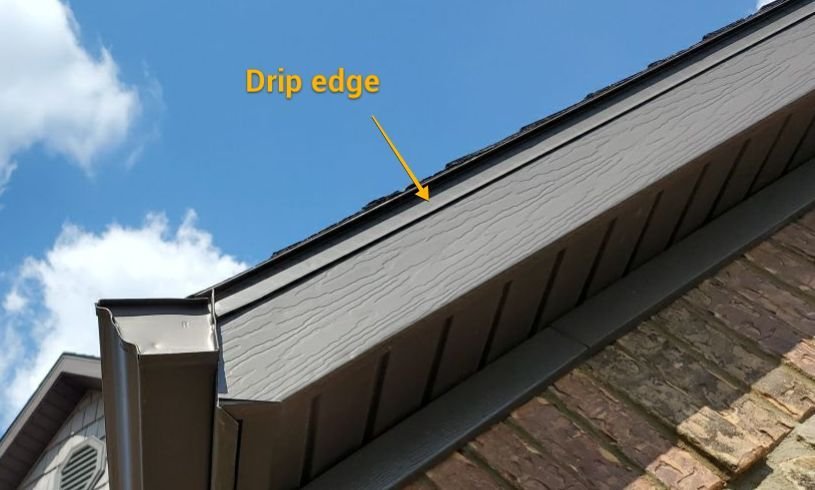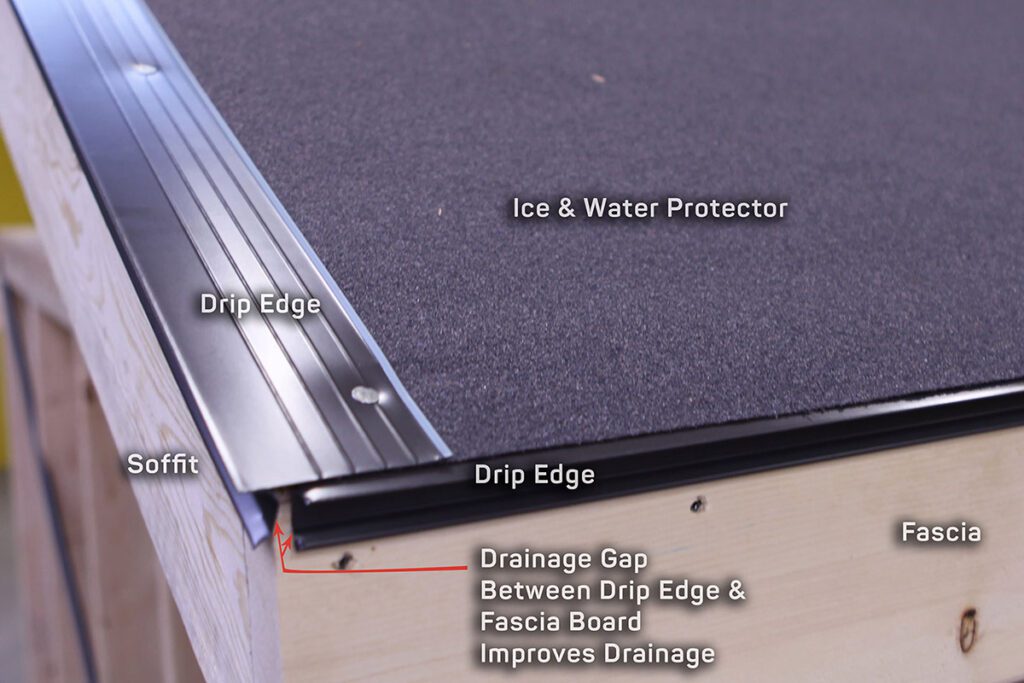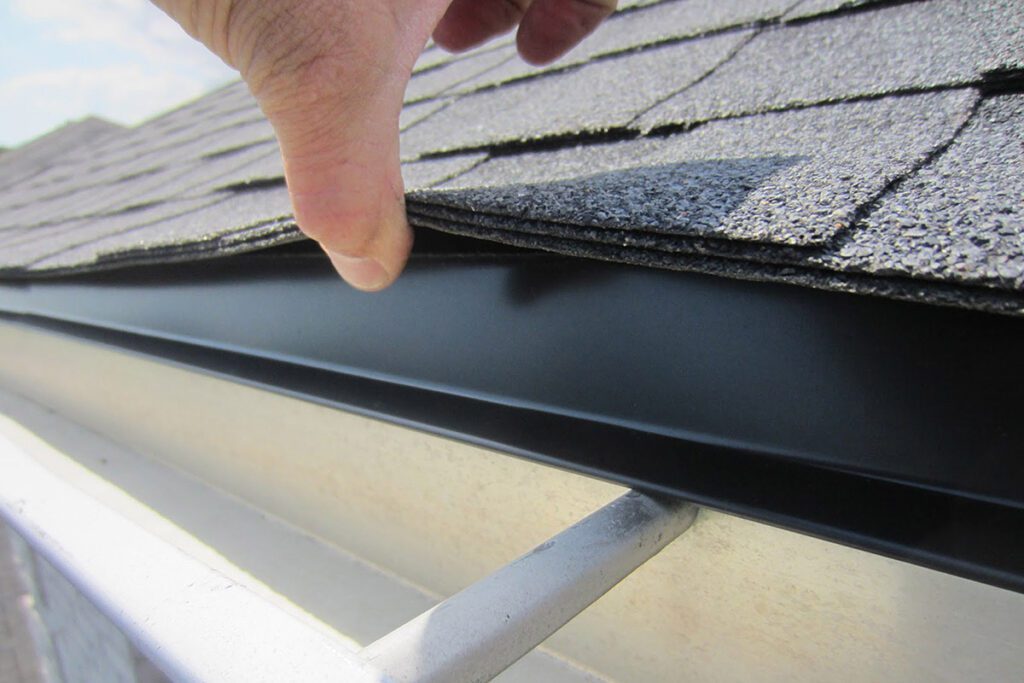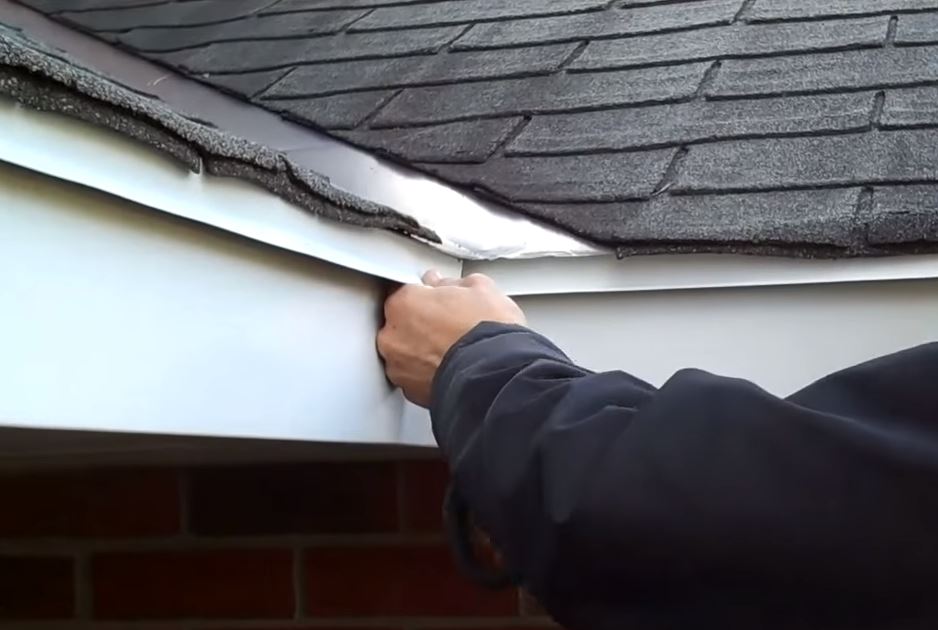Have you ever wondered if drip edge flashing is always necessary for a roof? When it comes to protecting your home from the elements, the importance of proper roof installation cannot be overlooked. While many roofing experts recommend the use of drip edge flashing, there is some debate on whether it is always required. In this article, we will explore the purpose and benefits of drip edge flashing, as well as the circumstances in which it may not be necessary. Whether you are a homeowner, a DIY enthusiast, or simply curious about the topic, join us as we investigate the world of drip edge flashing and its role in roof protection.

What is drip edge flashing?
Definition
Drip edge flashing is a roofing component that is installed along the edges of a roof, typically at the eaves and rakes. It consists of a long, thin strip of metal or plastic that is angled to direct water away from the roof and into the gutter system. The drip edge is usually bent at a 90-degree angle, with one leg extended over the roof surface and the other leg covering the fascia board.
Purpose
The primary purpose of drip edge flashing is to protect the structure of the roof and the underlying components from water damage. It helps to prevent water from seeping into the roof deck, fascia, and soffits, which can lead to rot, mold, and other costly repairs. Additionally, drip edge flashing provides a neat and finished appearance to the roof edges, enhancing the overall aesthetics.
Types
There are several types of drip edge flashing available on the market, each with its own unique design and installation method. The most common types include:
-
L-shaped drip edge: This type of flashing is shaped like an “L” and is often used on roofs with shingles. It provides a protective barrier along the eaves and rakes, preventing water from penetrating beneath the shingles and causing damage.
-
T-shaped drip edge: The T-shaped drip edge is similar to the L-shaped version, but with an additional horizontal leg. This design allows for easier installation and provides extra protection against wind-driven rain.
-
Preformed drip edge: Preformed drip edge flashing is manufactured with a specific shape and size, making installation quicker and more efficient. It is available in various materials, including metal and plastic.
-
Extendable drip edge: This type of flashing is adjustable in length, allowing it to be tailored to fit different roof sizes. It is often used in situations where a standard-sized drip edge may not be suitable.
The importance of drip edge flashing
Maintaining structural integrity
Drip edge flashing plays a crucial role in maintaining the structural integrity of a roof. By directing water away from vulnerable areas such as the roof deck, fascia, and soffits, it helps to prevent rot, decay, and damage caused by moisture infiltration. Additionally, drip edge flashing acts as a barrier against insects and other pests that can potentially damage the roof’s structure.
Preventing water damage
One of the primary functions of drip edge flashing is to prevent water damage. It effectively redirects water away from the roof edges, reducing the risk of water pooling and seeping into the underlying materials. Without proper drip edge flashing, rainwater can easily infiltrate the roof system, leading to leaks, mold growth, and compromised insulation.
Protecting fascia and soffit
Drip edge flashing provides an essential layer of protection for the fascia and soffit areas of a roof. These components are particularly vulnerable to water damage, as they are located at the edge of the roof and are often exposed to rain and moisture. By directing water away from the fascia and soffit, drip edge flashing helps to preserve their structural integrity and prolong their lifespan.
When is drip edge flashing necessary?
Building code requirements
In many regions, building codes mandate the installation of drip edge flashing as a standard roofing practice. These codes are in place to ensure the longevity and safety of the roof and the entire structure. Therefore, when undertaking a roofing project or building a new home, it is essential to consult local building codes to determine if drip edge flashing is required.
Climate considerations
The climate in which a building is located greatly influences the need for drip edge flashing. Areas with heavy rainfall, snowfall, or frequent storm activity are more prone to water damage and should prioritize the installation of drip edge flashing. Similarly, regions with high humidity levels can benefit from the added protection against moisture infiltration provided by drip edge flashing.
Roof slope
The slope of the roof is another factor to consider when determining the necessity of drip edge flashing. Steep roofs with a high pitch are more susceptible to wind-driven rain and may require additional protection. Drip edge flashing helps to channel water away from the roof surface, preventing it from being forced under the roofing materials, where it can cause damage.
Benefits of using drip edge flashing
Enhanced roof durability
By providing a reliable barrier against water intrusion, drip edge flashing significantly enhances the durability of the roof. Water damage can weaken the roof structure, compromise the integrity of roofing materials, and lead to costly repairs. With the proper installation of drip edge flashing, the risk of damage caused by water infiltration is greatly reduced, contributing to a longer lifespan for the roof.
Improved aesthetics
In addition to its practical benefits, drip edge flashing also enhances the overall appearance of a roof. It creates a clean and finished look along the edges, complementing the architectural style of the building. Drip edge flashing is available in various colors and materials, allowing homeowners to choose an option that seamlessly blends with their roof design and enhances curb appeal.
Easier gutter installation
Drip edge flashing provides a smooth transition between the roof and the gutter system, making gutter installation easier and more effective. It helps to guide water directly into the gutters, preventing overflow and minimizing the risk of water damage to the building’s foundation. Without drip edge flashing, water can cascade directly off the roof edge, causing erosion and potential flooding issues.

Different types of drip edge flashing
L-shaped drip edge
L-shaped drip edge flashing is the most commonly used type, especially in conjunction with shingle roofs. Its design allows it to fit snugly against the roof deck and extend over the eaves, effectively redirecting water away from the roof and into the gutter system. L-shaped drip edge flashing also helps to protect the underlying shingles from moisture infiltration, extending their lifespan.
T-shaped drip edge
T-shaped drip edge flashing is similar to the L-shaped version but includes an additional horizontal leg. This added feature provides extra protection against wind-driven rain, ensuring that water is effectively channeled away from the roof and into the gutters. T-shaped drip edge flashing is particularly beneficial in areas prone to heavy rain or strong winds.
Preformed drip edge
Preformed drip edge flashing is manufactured with a specific shape and size, simplifying the installation process. It is available in various materials, including metal (such as aluminum or galvanized steel) and plastic (such as PVC). Preformed drip edge flashing is often chosen for its durability, weather resistance, and compatibility with different roofing materials.
Extendable drip edge
Extendable drip edge flashing is a versatile option that can be adjusted to fit roofs of varying sizes. This type of flashing is beneficial when dealing with irregular roof dimensions or when a standard-sized drip edge may not fit properly. Extendable drip edge flashing is typically made of metal and allows for a customized fit during installation.
How to install drip edge flashing
Tools and materials required
Before installing drip edge flashing, gather the necessary tools and materials, including:
- Drip edge flashing
- Hammer or roofing nails
- Roofing adhesive or caulking gun
- Roofing nails or screws
- Measuring tape
- Utility knife
- Safety goggles
- Gloves
Make sure to wear appropriate safety gear, such as goggles and gloves, throughout the installation process to protect yourself from sharp edges and debris.
Preparing the roof
Start by preparing the roof for installation. Remove any old or damaged flashing, ensuring that the roof surface is clean and free of debris. Inspect the roof for any signs of damage or deterioration that may need to be addressed before installing the new drip edge flashing.
Attaching the drip edge
Measure and cut the drip edge flashing to the appropriate length, allowing for a slight overhang at the eaves and rakes. Begin at one corner of the roof and position the first section of the drip edge flashing along the eave, with the longer leg overhanging the roof deck. Secure the flashing using roofing nails or screws, making sure to drive them through the drip edge and into the roof deck.
Continue installing the drip edge flashing along the eave, overlapping the sections as necessary. Repeat the process on the rake edges, ensuring that the flashing extends at least a few inches beyond the edge of the roof. Use roofing nails or screws to secure the flashing in place, taking care not to overdrive the fasteners and damage the roof deck.
Sealing the joints
To further enhance the water resistance of the drip edge flashing, apply a bead of roofing adhesive or use a caulking gun to seal the joints between the flashing sections. This step helps to prevent any water from seeping beneath the flashing and causing damage. Be thorough in applying the sealant, ensuring that all gaps and edges are adequately covered.

Common misconceptions about drip edge flashing
Drip edge vs. gutter apron
One common misconception is that drip edge flashing and gutter apron are the same thing. While they serve similar purposes, they are not interchangeable. Drip edge flashing is installed along the roof edges and is designed to direct water away from vulnerable areas. Gutter apron, on the other hand, is installed under the shingles and over the gutters to prevent water from seeping behind the gutter system.
Drip edge as a substitute for proper shingle overhang
Another misconception is that drip edge flashing can substitute for proper shingle overhang. Shingle overhang refers to the portion of the shingle that extends beyond the edge of the roof. While drip edge flashing can help protect the roof from water damage, it is not a replacement for adequate shingle overhang. Both components work together to provide effective protection against water infiltration.
Drip edge causing ice dams
Some homeowners believe that drip edge flashing can cause ice dams, which occur when snow on the roof melts and refreezes at the eaves, causing water to back up under the shingles. However, when installed correctly, drip edge flashing does not contribute to ice dams. In fact, it helps prevent them by directing water off the roof and into the gutters, eliminating the buildup of water in vulnerable areas.
The potential drawbacks of not using drip edge flashing
Increased risk of water damage
Without the protection of drip edge flashing, roofs are more susceptible to water damage. Water can seep into the roof deck, fascia, soffits, and other vulnerable areas, causing rot, mold growth, and structural deterioration. Over time, the accumulated moisture can compromise the integrity of the entire roof system, leading to costly repairs and potentially hazardous living conditions.
Shortened lifespan of roof
Water infiltration due to the absence of drip edge flashing can significantly reduce the lifespan of a roof. Moisture can cause shingles to deteriorate more quickly, requiring premature replacement. In addition, the moisture can penetrate the roof deck, leading to rot and decay. The overall integrity of the roof is compromised, resulting in a shorter lifespan and the need for extensive repairs or even a full roof replacement.
Compromised structural integrity
Drip edge flashing acts as a barrier against water, pests, and other elements that can compromise the structural integrity of a roof. Without proper drip edge flashing, water infiltration can lead to issues such as rotting wood, weakened roof trusses, and sagging ceilings. Ultimately, the absence of drip edge flashing can compromise the overall structural stability of the roof, posing safety risks to the occupants of the building.

Cost considerations and alternatives
Material costs
The cost of drip edge flashing can vary depending on the material chosen. Aluminum is a popular choice due to its durability, weather resistance, and affordability. Galvanized steel is another option that provides excellent protection against corrosion. Plastic drip edge flashing, particularly PVC, is often chosen for its lightweight properties and ease of installation. The cost of each material will depend on factors such as quality, brand, and location.
Professional installation vs. DIY
While some homeowners may choose to install drip edge flashing themselves, others may prefer to hire a professional. The choice between professional installation and DIY depends on factors such as experience, comfort level with roofing projects, and time constraints. A professional installer can ensure proper installation and help navigate any challenges that may arise during the process.
Alternatives to drip edge flashing
In some cases, alternative methods may be used to achieve similar results as drip edge flashing. One alternative is to install a gutter apron, which provides a barrier between the shingles and the gutter system. Another option is to use underlayment material extended over the roof edge, providing an additional layer of protection against water infiltration. However, it is important to note that these alternatives may not offer the same level of effectiveness as drip edge flashing.
Conclusion
Drip edge flashing is a critical component of any roofing system, providing protection against water damage, preserving the structural integrity of the roof, and enhancing its overall aesthetics. It is necessary to consult local building codes and consider climate and roof slope factors to determine whether drip edge flashing is required. The installation of drip edge flashing can greatly benefit the longevity and durability of the roof, while the absence of it can lead to extensive damage and costly repairs. By understanding the importance of drip edge flashing and its various types, installation process, and alternatives, homeowners can make informed decisions to ensure their roofs are well-protected and maintain their integrity for years to come.
